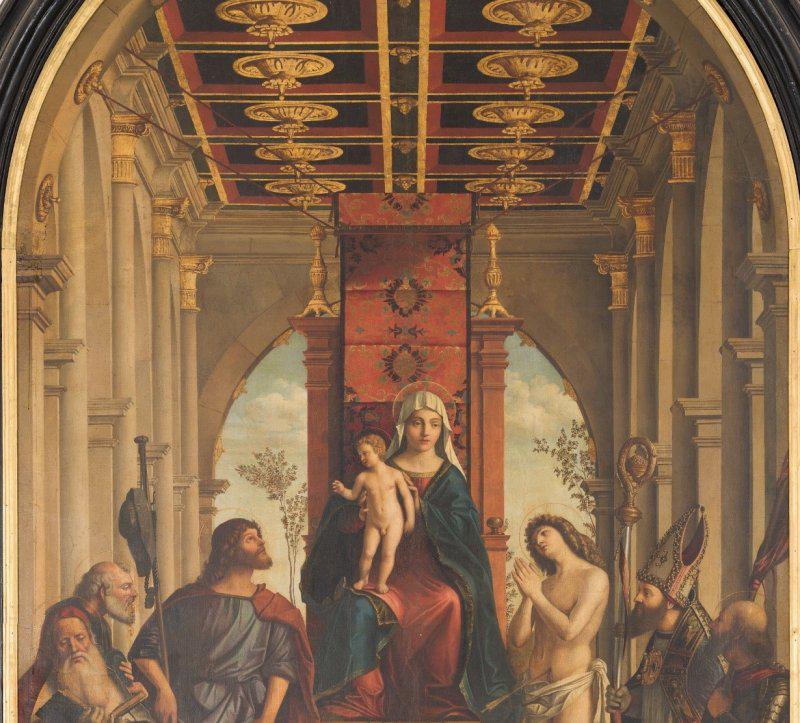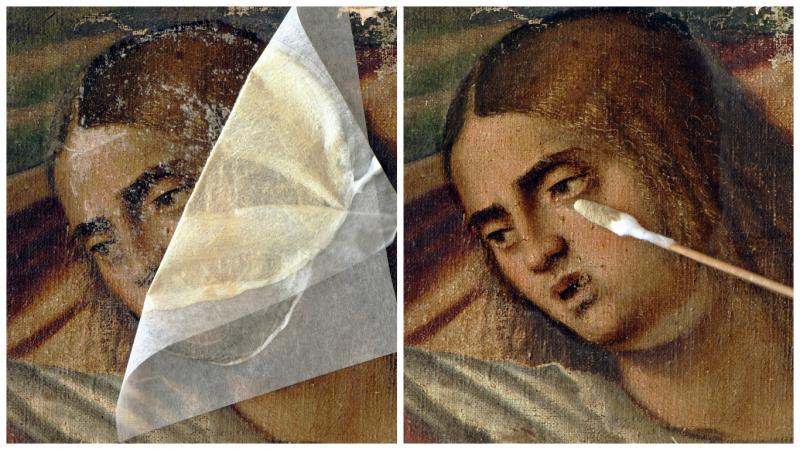

In 1516, he created a large altarpiece by the name of Madonna with Child on the Throne and Six Saints, which still adorns the Cathedral of the Assumption in Koper.
Five hundred years after Carpaccio’s time, the cultural scene of the Primorska region was filled with events held under the name of Carpaccio500. The fundamental purpose of the project was to raise awareness and educate the public about the cultural wealth of Slovenia. At the restoration workshop held in the atrium of the Koper Regional Museum, which was prepared by the Conservation Centre from the Institute for the Protection of Cultural Heritage of Slovenia and by the Museum, attendees could see the on-going restoration of the last documented paintings by Vittore Carpaccio, titled Massacre of theInnocents and the Presentation of Jesus in the Temple. These works, which date back to 1523, where on the right wing of an organ cabinet. The left wing, which was also decorated by two Carpaccio paintings, was unfortunately lost during various historical upheavals over the centuries.
Discovery of original sections
Details of the complex conservation and restoration procedures were presented on posters and digitally in the atrium of the Museum, with the media and public showing great interest. The interactions between the conservators and restorers, who carried out the restoration work, and individuals from schools and kindergartens, as well as foreign and domestic visitors, proved there is widespread interest in such events if properly presented.
The conservation and restoration project was launched in 2010. An extensive series of natural science studies carried out by local and foreign experts determined the elements the paintings were composed of. Various pigments and binder substances were thus identified. The material that the master himself, or perhaps his apprentices, used to produce the woven carrier was also determined. Understanding the painter’s technology and analysing the state of the paintings is the basis for any successful restoration of damaged artworks. When first received for the conservation and restoration process in 2015, the paintings were extremely dark and dirty. There was also extensive damage to the paint layers, as well as areas that had been retouched and painted over. The surfaces of both paintings were extremely dark, mainly due to the use of non-original varnishes. One of the conservation and restoration procedures was thus the removal of this darkened varnish from both paintings. Once this was completed, the beautiful range of colours used by the artist was revealed, along with the masterfully painted details. This was followed was the removal of darkened retouches and paint-overs, and when working on the Massacre of the Innocents the conservators came upon a surprise. The removal of the upper layer revealed the painted portrait of a girl. Once the conservation and restoration procedures are completed, the revelation of the original paintings and remarkable colours used by Carpacciowill allow a visual and stylistic re-definition of the Slovenian art produced by this Renaissance master.

































































